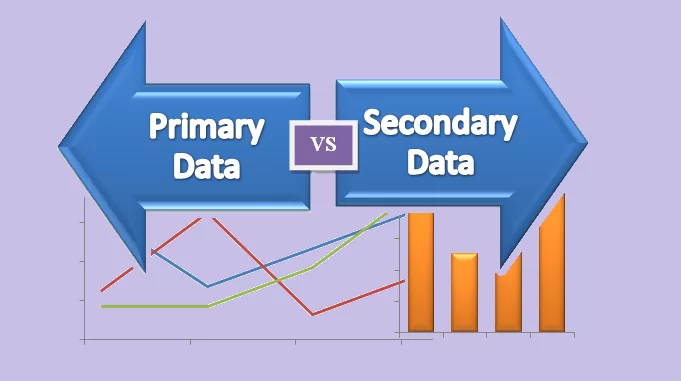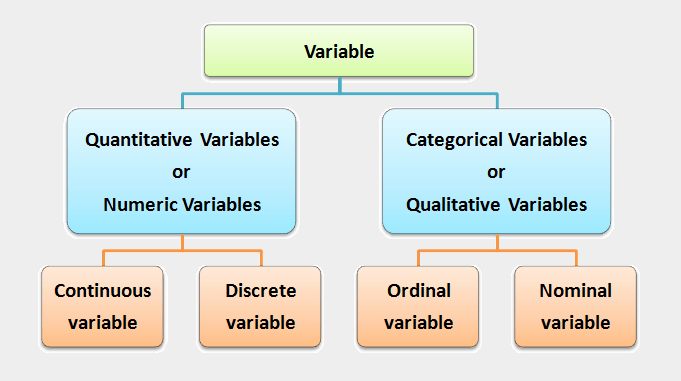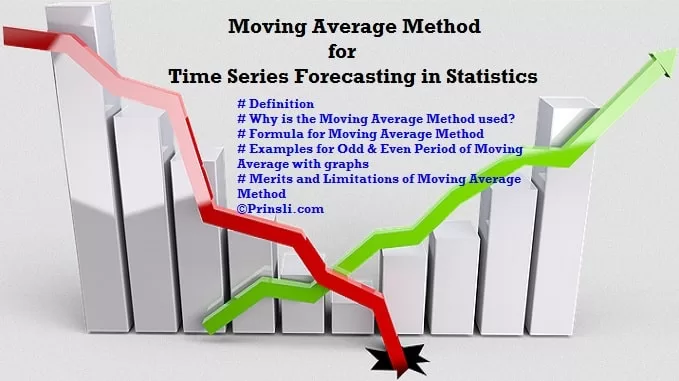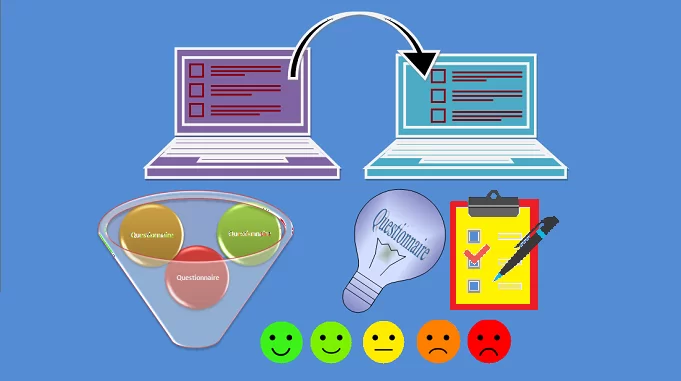
Distinguish / Difference between Primary Data and Secondary Data –
Differences between Primary Data and Secondary Data on the basis of characteristics are as follows:
(1) Meaning:
- Primary data is the first-hand data collected by the researcher/user himself.
- Secondary data have already been collected by some other person in the past.
Read Also: What is Primary Data
Read Also: What is Secondary Data
(2) Definition:
- Primary data is a type of data that researchers/users collect directly from original sources through interviews, surveys, experiments, etc.
- Secondary data is a type of data that has already been obtained and which researchers can use readily for their own research.
(3) Purpose of the data collection:
- Primary data are mainly collected for a specific purpose and are involved in direct usage without any manipulation.
- Secondary data can be collected for a variety of purposes, depending on the needs of the user, in order to derive various types of inferences after appropriate manipulation.
(4) Method and Sources of data collection:
- Primary data are collected from direct personal interviews, indirect oral investigations, questionnaires, telephonic interviews, observations, surveys, focus groups, photographs, artifacts, case studies, videos, diary entries, eyewitnesses, experiments, etc.
- Secondary data are collected from newspapers, books, magazines, websites, blogs, published & unpublished personal sources, journals, government & semi-government records, published data by the state or central government, articles by local bodies, census data, magazines, periodicals, journals, podcasts, diaries, letters, radio stations, public sector records, articles, internal records, etc.
(5) Type of data/Nature of data/Availability of data:
- Primary data is available in crude or rough or raw material form.
- Secondary data is available in polished or processed or refined or finished form.
(6) Relevancy:
- Primary data is more relevant to the user’s requirements.
- As secondary data is not collected first-hand, it may not be as relevant to the researcher’s requirements.
(7) Specific for user:
- Primary data is always specific to the researcher’s needs.
- It is possible that secondary data is not specific to the researcher’s requirements.
(8) Data:
- Primary data is called “real-time data.”
- Secondary data is called “past data.”
(9) Collection time:
- Primary data takes a long time to collect because it is collected for the first time directly by the user.
- Secondary data takes a shorter time than primary data for collection because these are already collected and can be used later.
(10) Difficulty in collection:
- There is also difficulty in collecting primary data.
- There is no difficulty in collecting secondary data.
(11) Cost-effectiveness/ Expenditure:
- Primary data is cost-effective because the user has to conduct the surveys or questionnaires all by himself.
- Secondary data is economical because this type of data is already present in a presentable form on official websites or magazines, which can be used by the user to fulfil his purposes.
(12) Process for data collection:
- The process is very much involved in collecting primary data.
- Secondary data collection is a quick and easy process.
(13) Accessibility of data:
- As primary data is unique to research, it may not be easily accessible.
- Other researchers have already collected secondary data, so it is easily accessible.
(14) Accuracy of data:
- Primary data is more accurate than secondary data.
- Secondary data is relatively less accurate than primary data.
(15) Editing in data:
- Because primary data is usually collected for a specific reason, it does not need to be edited or manipulated in order to be represented for the project.
- Because secondary data was obtained for a different purpose, it will need to be edited or manipulated before it can be used in another project or purpose.
(16) Error in data:
- Primary data is first-hand data collected by the researcher/user himself and has not yet been verified; errors may occur.
- Because secondary data has previously been verified, there are fewer chances of errors.
(17) Precaution for collecting data:
- Primary data does not require any precautions because it was obtained for a specific purpose.
- Secondary data must be used with precautions because it was collected by someone else for their own purposes.
(18) Reliability, suitability, and dependability:
- The primary data is more reliable and more suitable for the survey because it is obtained for a certain purpose.
- Secondary data are less reliable and less suitable because it was obtained by someone else for other purposes and may not completely match the user’s needs.
(19) Control on data:
- Primary data is more specific to the researcher’s needs and is supervised directly.
- Control over secondary data supervision is low.
(Source – Various books from the college library)
Tags: primary and secondary data difference, difference between primary and secondary data with examples, what is the difference between primary data and secondary data explain it with examples, difference between primary and secondary data class 11, primary and secondary data in statistics
Copyrighted Material © 2019 - 2024 Prinsli.com - All rights reserved
All content on this website is copyrighted. It is prohibited to copy, publish or distribute the content and images of this website through any website, book, newspaper, software, videos, YouTube Channel or any other medium without written permission. You are not authorized to alter, obscure or remove any proprietary information, copyright or logo from this Website in any way. If any of these rules are violated, it will be strongly protested and legal action will be taken.




Be the first to comment